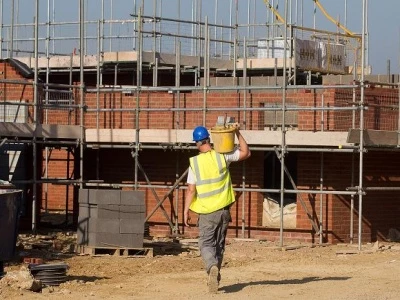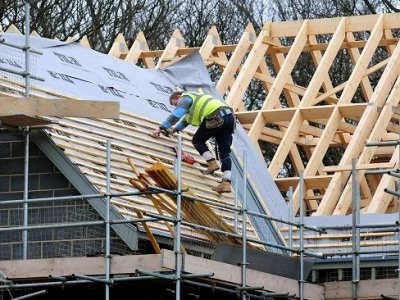Loophole lets developers halve number of affordable homes
Source: Jerome Starkey.
The Times, Saturday 3rd March 2018.
Property developers have used a legal loophole to halve the number of affordable homes that they are building in the countryside.
A study of more than 150 new housing developments found that confidential viability assessments had been used to cut the number of affordable houses by 48 per cent. The assessments let developers break promises made to get planning permission, if they can show those commitments will eat into profits.
The research, which was commissioned by Shelter, the charity for the homeless, and the Campaign to Protect Rural England (CPRE), found that eight rural councils lost 938 affordable homes after viability studies over the course of a year. "The viability loophole is slashing affordable housing supply in the countryside," the report said. "The profits of volume housebuilders are rocketing, yet affordable housing provision by the same developers is being undercut on the grounds that it is not profitable enough."
In one instance in Cornwall, the owners of a disused tin and copper mine promised that 40 per cent of the site's 99 new homes would be affordable. They cut that commitment to zero with a viability study. The owners then advertised the plot for sale, boasting in the brochure that all of the plots had been approved for "open market housing" without any "liabilities".
Central Bedfordshire, which was the worst affected of the eight councils in the study, lost 533 affordable homes in the 2015-2016 financial year.
Affordable housing includes homes for social rent, shared ownership and other intermediate tenures. "The term affordable in this context does not necessarily mean that these homes are in fact genuinely affordable to local people," the report said.
The profits of Britain's three biggest builders, Barratt Developments, Taylor Wimpey and Persimmon Homes, have quadrupled since 2012 to £2.2 billion a year. Yet they regularly cite financial constraints to reduce the percentage of affordable homes at new developments.
At Sowerby Gateway in North Yorkshire, Taylor Wimpey promised to build 256 affordable homes. A viability study cut that promise to zero. "Too much of our countryside is eaten up for developments that boost profits, but don't meet local housing needs because of the viability loopholes," said Crispin Truman, the chief executive of CPRE.
Councils can challenge viability studies but the government has guaranteed big builders at least a 20 per cent profit. If the builders can show that they stand to make less, the government will side with them.
"Developers are using this legal loophole to overpower local communities and are refusing to build the affordable homes they need," said Polly Neate, the chief executive of Shelter.
Sajid Javid, the communities secretary, has promised to review how "viability is assessed" when he starts a consultation next week to overhaul the planning laws.
Separate research by the Institute for Public Policy Research, a think tank, found that the number of people sleeping rough in rural parts of England increased by 42 per cent from 397 in 2010 to 565 in 2016.
Houses are 26 per cent more expensive in the countryside because of pressure from wealthy retirees and buyers of second homes, but wages in rural areas are 26 per cent lower, which has created an exodus of young families.
Andrew Whitaker, from the Home Builders Federation, an industry body, said local authority targets were always negotiable. "There is a limit as to what can be extracted from development sites before they become unviable and you get no homes of any sort," he said.
View the CPRE Report here








